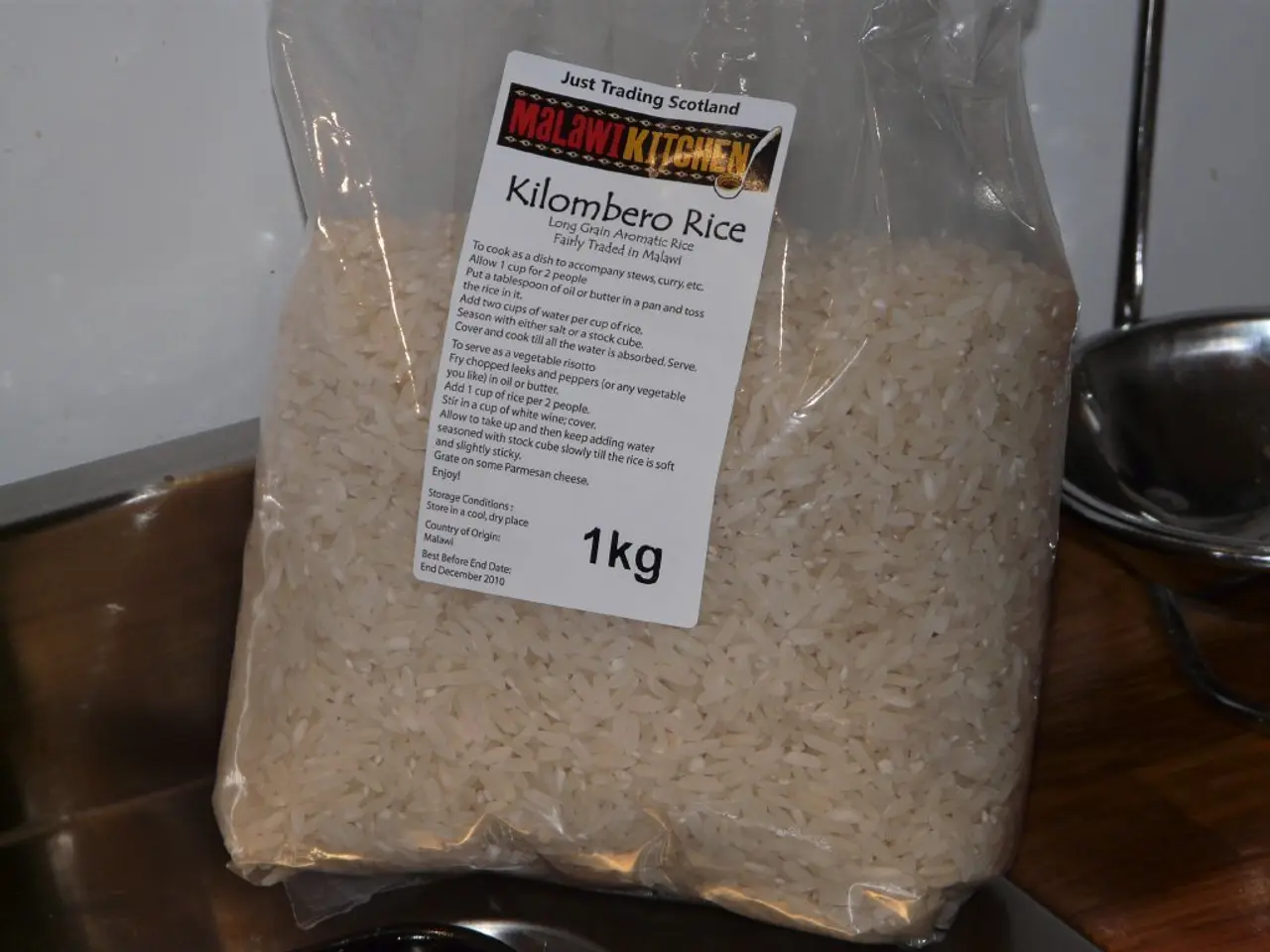Increase in preference for mix grain options in pre-cooked rice among South Korean youths, according to gathered statistics
Ready-to-Eat Rice Market in Korea: A Growing Trend Towards Mixed Grains
In the ever-evolving food market of South Korea, a notable shift has been observed in the ready-to-eat (RTE) rice sector. According to recent data, sales of RTE white rice grew by 9.1 percent in 2023, but it's the rise in demand for mixed grain varieties that truly stands out.
Purchases of mixed grain varieties have surged among various age groups. Among those in their 60s, 50s, 40s, and under 30, the growth has been impressive, with increases of 18 percent, 22 percent, 30 percent, and 39 percent respectively. This trend continued into 2025, with sales of mixed grain products logging a significant 22.1 percent jump compared to 2023.
While specific data on the popularity of mixed grain varieties among young Koreans between 2023 and 2025 is scarce, several factors can be inferred from broader trends and contextual factors generalizable to South Korea and the food market.
Firstly, the younger consumer segment in Korea is increasingly health-conscious and values nutrition and convenience. Mixed grain rice products, which often combine white rice with nutritious grains like barley, black rice, and millet, cater to this growing demand. These products offer a quick and easy meal option without compromising on health benefits.
Secondly, the ready-to-eat market in Korea has been expanding due to the rise in single-person households and working professionals. These consumers prioritize quick meals without sacrificing quality or health benefits, which mixed grain varieties can address more effectively than plain white rice.
Thirdly, urbanization and evolving food culture in East Asia emphasize diversified, functional, and convenient food products. Mixed grain rice varieties offer not only improved taste and texture complexity but also enhanced nutritional profiles (more fiber, minerals, antioxidants), making them attractive in ready-to-eat formats.
Lastly, Korean food industry players have been innovating in the RTE segment, incorporating traditional grains with modern convenience, likely contributing to the growth of mixed grain varieties in that timeframe.
Despite the lack of specific sales figures and market analyses exclusively on the Korean mixed grain RTE rice market from 2023-2025, recent food policy discussions and urban food culture research illustrate the rising popularity of diversified grain options in Korea’s convenience food sector, driven by health awareness, lifestyle changes, and culinary experimentation.
Factors driving the trend:
- Health and nutrition awareness: Mixed grains offer higher nutritional value (fiber, vitamins, antioxidants) than plain white rice.
- Convenience demand: Ready-to-eat mixed grain products suit busy lifestyles and single/dual households.
- Culinary experimentation: Younger consumers seek more diverse textures, flavors, and traditional grain blends.
- Urban lifestyle and demographics: Urban living, smaller households increase RTE consumption and interest in functional foods.
- Industry innovation and marketing: Food companies are promoting mixed grain RTE options to meet health trends and convenience needs.
While more specific data on the Korean mixed grain RTE rice market from 2023-2025 is yet to be found, it's clear that the trend towards mixed grain varieties in the ready-to-eat rice market is a significant development in South Korea's food industry.
- As the health and wellness movement continues to gain traction in South Korea, consumers are increasingly turning to mixed grain varieties for their nutritional benefits, such as higher fiber, vitamin, and antioxidant content.
- In the realm of fitness and exercise, mixed grain rice has become a popular choice for health-conscious individuals who value nutrition, convenience, and a balanced diet, matching their busy lifestyles and nutritional needs.







